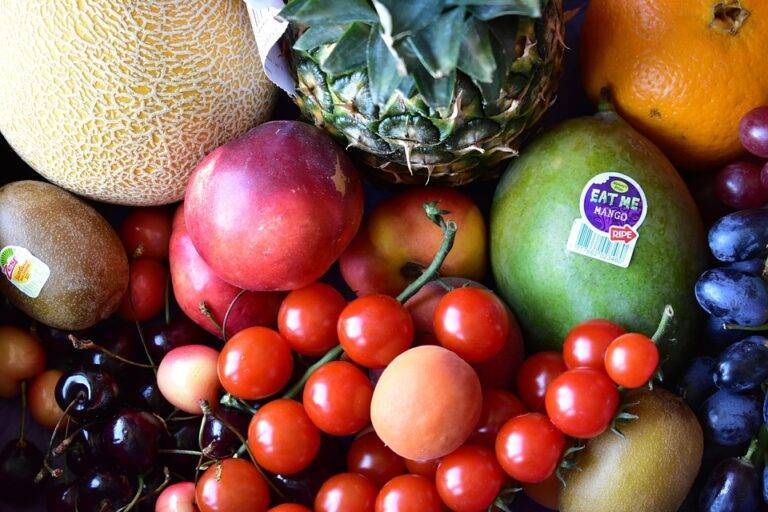
Fruit punch has evolved far beyond its traditional sweet and citrusy roots. In recent years, beverage brands have embraced exotic fruit punch flavors to appeal to adventurous consumers seeking bold taste experiences. By blending tropical and less familiar fruits into their formulas, companies are creating refreshing beverages that stand out in a crowded marketplace while tapping into consumer demand for novelty, global influence, and clean-label refreshment.
Industry Overview
The fruit punch category represents a growing subsegment within the non-alcoholic beverage market, which is expected to surpass $1.6 trillion in global value by 2025, growing at a CAGR of 5.8%. Within this space, fruit punch is seeing renewed interest due to its customizable nature, ability to deliver vibrant, layered flavor profiles, and appeal across demographics, from Gen Z to multicultural families.
Market Trends
One of the strongest trends driving fruit punch innovation is the introduction of exotic fruit combinations. Brands are increasingly moving beyond traditional blends like orange, cherry, and pineapple, and introducing flavors such as:
-
Dragon fruit & lychee
-
Passion fruit & guava
-
Mangosteen & blood orange
-
Tamarind & hibiscus
-
Mango, pineapple & chili-lime
This fusion of sweet, tart, floral, and even spicy notes is designed to appeal to global palates and consumers looking for a more adventurous sensory experience.
Consumer Preferences
Today’s beverage consumers—particularly Millennials and Gen Z—are drawn to products that offer vibrancy, uniqueness, and cultural authenticity. Market research shows that more than 62% of consumers are interested in trying new and exotic flavors in beverages, especially when these flavors are paired with clean label claims like “real fruit,” “no added sugar,” or “all-natural ingredients.”
The use of exotic fruits also appeals to multicultural households, offering nostalgic flavors familiar to Latin American, Asian, and African cuisines while introducing new taste profiles to broader audiences.
Brand Strategies in the Exotic Fruit Punch Segment
1. Product Line Expansion
Major brands have invested in tropical and exotic SKUs to diversify their offerings:
-
Minute Maid introduced a Tropical Blend fruit punch made with passion fruit and guava.
-
Tampico Beverages launched a Zero Sugar Mango Punch to appeal to health-conscious consumers.
-
Good2Grow developed a Tropical Punch line for kids using real fruit juice and no artificial colors or preservatives.
2. Collaborations with Chefs and Mixologists
To elevate their profile, brands are partnering with well-known mixologists and celebrity chefs to co-create flavor-forward punch recipes:
-
One major grocery retailer partnered with a TV chef to launch a limited-edition lychee-elderflower punch using sustainably sourced ingredients.
-
Beverage bars and juice bars across urban markets are crafting in-house exotic punch blends as part of seasonal or cultural menus.
3. Social Media-Driven Campaigns
With platforms like Instagram and TikTok driving consumer awareness and viral beverage trends, brands have leaned into visual storytelling by highlighting:
-
Bright, colorful punch photos in tropical settings
-
Behind-the-scenes footage of flavor testing
-
User-generated content featuring consumers sampling new flavors
This has proven especially effective for capturing younger audiences interested in authenticity and creative branding.
Product Innovation
Innovation in the exotic fruit punch space has focused on:
-
Hybrid beverages that combine punch with coconut water or green tea for added functionality
-
Low-calorie options using monk fruit or stevia as natural sweeteners
-
Sparkling exotic punches that add effervescence to flavor blends like mango-chili or lychee-lime
-
Ready-to-drink formats in resealable pouches, glass bottles, and boxed cartons that cater to both portability and sustainability trends
Case Studies of Brands Using Exotic Fruit Punch to Drive Growth
1. Tampico Beverages
Tampico has aggressively expanded its fruit punch portfolio with tropical and Latin-inspired flavors. Its Island Punch line features guava, papaya, mango, and pineapple. This flavor-first approach helped Tampico grow its Latin American market share by 15% in 2023, and gain new distribution in over 20 countries.
2. Minute Maid Tropical Punch
Coca-Cola’s Minute Maid brand revamped its tropical punch range to include more global fruits. The passion fruit and mango blend has become a bestseller in the U.S. and parts of Southeast Asia, contributing to a 6% increase in fruit punch segment sales year-over-year.
3. Ocean Spray Cran-Mango Punch
Ocean Spray has successfully launched a line of tropical-inspired punches that include blends such as cran-mango and cran-pineapple, aligning with their heritage while attracting younger, trend-driven consumers. These blends helped Ocean Spray record a 9% increase in sales within the RTD juice category in 2024.
Financial Impact
Brands that have leaned into exotic punch innovation are seeing tangible financial returns:
-
Double-digit revenue growth in seasonal SKUs, particularly during summer promotions
-
Higher repeat purchase rates for exotic flavor profiles compared to standard fruit punch
-
Increased distribution in specialty retail channels, including ethnic markets, natural food stores, and global export lines
Conclusion
Exotic fruit punch flavors are reshaping the landscape of the non-alcoholic beverage market. By embracing global flavor profiles, investing in creative marketing, and aligning with evolving consumer values around health and diversity, brands are transforming a classic drink into a modern-day success story.
Those who lead with innovation—offering tropical blends, cultural authenticity, and visual appeal—are winning shelf space and consumer loyalty in equal measure. As demand for bold, adventurous, and refreshing flavors continues to rise, exotic fruit punch is proving to be more than a trend—it’s the future of flavored beverages.